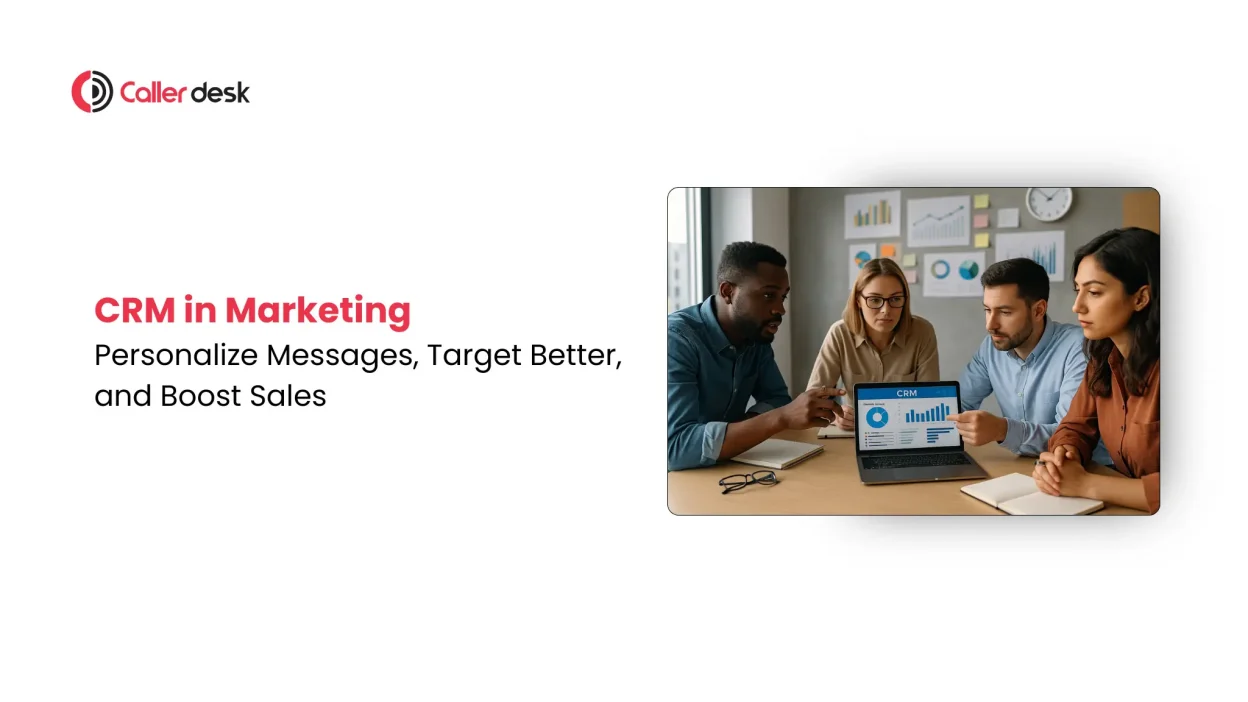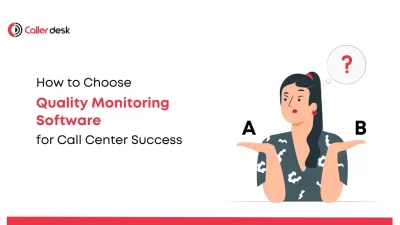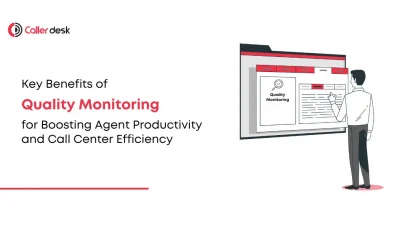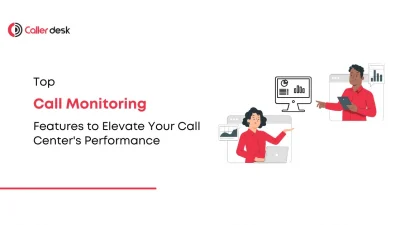Marketing is not just about sending emails or putting ads on the internet.
If you really want people to notice your business, you need to send the right message to the right person at the right time.
To do that, you need to know your customers well.
You need to know:
- What they are interested in
- What they bought before
- What they clicked on
- Or if they are planning to leave
This is where a CRM helps you.
CRM stands for Customer Relationship Management. It’s a tool that stores all the information about your customers in one place. It helps you remember who your customers are, what they like, and how to talk to them better.
When you use a CRM in your marketing, things get easier:
- Your ads and messages become more personal
- Your customers feel more connected to your brand
- Your team can follow up faster
- And you get better results from your campaigns
In this blog, we’ll explain what CRM is, how it works in marketing, and show real examples of how businesses are using it to grow.
What Is CRM in Marketing?
A CRM is a tool that stores and organizes everything you know about your leads and customers—like their name, interests, purchase history, and even which emails they opened.
But today, CRM does much more than just store data.
With the right CRM, marketers can:
- Group customers by interest and behavior (called segmentation)
- Send personalized emails and ads
- Track performance in real-time
- Automate follow-ups
- And even predict who might stop buying (churn)
Real-Life Examples of CRM in Marketing Campaigns
Using CRM in marketing isn’t theory—it’s proven through real results. Below are real-world examples from different industries where CRM systems helped transform campaigns through personalization, automation, and actionable insights.
1. Personalized Email Campaign – E-commerce Fashion Brand
A leading fashion e-commerce company aimed to increase repeat purchases and boost customer loyalty. Using its CRM platform, the team segmented customers based on shopping behavior—such as high-value shoppers, bargain hunters, and cart abandoners.
They implemented dynamic email campaigns using behavioral triggers. For example:
- Cart abandoners received a limited-time discount.
- Repeat buyers were shown premium product suggestions.
- Casual browsers were targeted with best-sellers from the sale section.
All communications were automated and adjusted in real-time based on user interactions. As a result, open rates improved by 25%, purchases increased by 35%, and the average order value grew by 20%.
2. Omnichannel Campaign – Global Travel Company
A travel company used CRM to unify customer data across channels—email, SMS, social media, and website activity. With insights into past bookings and browsing behavior, they created personalized vacation packages and targeted messaging across platforms.
- Past customers received destination-based package offers through email.
- Website visitors were retargeted with social media ads aligned with their interests.
- SMS reminders were sent to users who didn’t complete bookings.
The CRM system enabled centralized performance tracking, allowing for real-time optimization of creatives, messaging, and budget allocation.
The campaign led to a 40% increase in bookings, 30% improvement in email engagement, and a 25% rise in overall revenue during the campaign period.
3. Lead Nurturing via Social Media – SaaS Project Management Platform
A SaaS company offering project management solutions used CRM to streamline its social media lead capture and nurturing workflows.
- LinkedIn and Facebook ads generated new leads via gated content and trial offers.
- Leads were scored based on their interactions—those who downloaded multiple resources were prioritized.
- Nurturing campaigns were automated via email and social ads, based on the user’s behavior and stage in the buying journey.
The CRM tracked every engagement point and allowed seamless handoff to sales once the leads were qualified. As a result, the company saw a 50% increase in qualified leads and a 30% rise in conversions from lead to paid customer.
4. Customer Retention Campaign – Subscription-Based Meal Kit Service
A meal delivery company wanted to stop customers from canceling their subscriptions and keep them coming back for longer.
They used their CRM system to find customers who might stop using the service. These were people who:
- Skipped their meal deliveries often,
- Ordered less than usual,
- Or gave negative feedback.
Once these “at-risk” customers were identified, the marketing team stepped in to bring them back.
Here’s what they did:
- Sent special offers and discounts to get their attention again.
- Shared quick SMS links so users could easily change their next meal plan.
- Launched a rewards program where loyal customers could earn points for staying active.
As a result, fewer people canceled (25% drop in cancellations), and existing customers started staying longer and spending more (15% increase in lifetime value). The number of happy customer reviews also went up by 40%.
5. Onboarding Optimization – Financial Services Firm
A financial company that gives out credit cards and personal loans wanted to make sure new customers had a smooth start. They used a CRM system to automate and improve their onboarding process.
As soon as a customer was approved, the CRM sent them a personalized welcome email along with step-by-step setup instructions.
If the customer didn’t complete key actions—like activating their card—the CRM sent automatic SMS reminders to help them finish.
The system also kept an eye on who was struggling or not engaging. If someone seemed confused or inactive, the CRM flagged it, and a support team member reached out to offer help.
Because of these changes, more people completed their setup in the first week (a 30% increase), support calls went down by 40%, and fewer customers left early (15% reduction in early drop-offs).
How CRM Helps Marketers Do More (With Less Effort)
Here are some smart things you can do with a CRM:
| Feature | Benefit |
| Segmentation | Target people by interests, actions, or location |
| Automation | Send emails, SMS, or ads automatically |
| Behavior tracking | Know who visits your website or opens your emails |
| Retargeting | Show ads to users who didn’t convert |
| Real-time analytics | Track campaign results live |
| Loyalty program integration | Reward frequent buyers with points or offers |
| A/B testing | Compare subject lines, designs, offers |
How AI Helps in CRM Marketing
Today, many CRM tools come with built-in Artificial Intelligence (AI). This means the system can do smart things on its own to help you save time and improve your marketing.
Here’s how AI makes CRM more powerful:
1. Predicts What Customers Might Do
AI looks at past behavior to guess what a customer might do next. For example, it can tell if someone is likely to buy soon—or stop using your product—so you can take action early.
2. Groups Customers Automatically
Instead of manually sorting customers, AI can group them based on things like what they bought, how often they visit your website, or what they are interested in. This helps you send the right message to each group.
3. Understands Customer Feelings
AI can read reviews, feedback, or comments and tell you if a customer is happy, upset, or confused. This helps you understand how customers feel about your business.
4. Answers Questions Instantly
AI chatbots can talk to customers on your website anytime—even at night. They can answer common questions and help people quickly, without needing a human.
5. Gives Smart Suggestions
AI can recommend products or content to each customer based on what they’ve seen or bought before—just like how YouTube or Amazon show you things you might like.
In short:
AI helps your CRM become smarter. It saves you time, helps you understand customers better, and makes your marketing more personal and effective.
Conclusion
If you’ve made it this far, one thing should be clear—CRM is no longer just a sales tool. It’s your marketing team’s best friend.
From sending personalized emails to running retargeting ads and predicting customer behavior, a CRM gives you everything you need to run smarter, more profitable campaigns.
And when combined with AI, it doesn’t just store customer data—it puts it to work for you.
Here’s the bottom line:
If you want your marketing to be more personal, more timely, and more effective—start with your CRM.
It’s the key to:
- Knowing your customers better
- Reaching them at the right time
- And turning leads into loyal customers
Don’t just collect data. Use it.
Because the brands that understand their customers always win.





